From solving housing challenges on Earth to venturing off to make habitation in Outer Space!
3D Technology is poised to change the World , or the world the way we see it, monuments, landmarks, et al. Many have hailed the 3D Printing as the coming of the third industrial revolution. Aptly so, as designers and architects can now 3D print items out of materials like masonry, concrete and even wood! One can only imagine what it means for the architecture we admire and greatly revere, around the world, which has played a crucial role in establishing the organisation of the cities we live in today. And even though this description of architecture, is purely in the traditional sense of it, but firms today are not shying from harnessing disruptive techniques of new technologies and artificial intelligence, to accelerate architectural formations and transformations, using automated construction techniques.
Technology has taken over almost every aspect of our lives. It has changed the way we communicate, how we connect, how we work and study, and has even modified our buying and eating habits. Architecture and construction were not the exceptions, and technology is now present in the way it is being thought, designed, and built. For several years, the construction sector has been facing a labour shortage, generating a growing interest in automation. The health crisis has only exacerbated the trend, prompting automation companies to turn their focus from car manufacturing to the construction industry, for which automation is expected to grow up to 30% within the next few years. The amplification of present capabilities and an accelerated expansion of future possibilities , can only be possible of if we ride the wave of automation , within the construction process, with its seamless integration into the mainstream practice, to impact construction and design. This could effectively be used to trial new possibilities and designs, or even test the durability of a structure before it’s made. Thus, it offers more than just a resource and reference point, as 3D designed models could help see the results of the proposed construction work , even before anything is put in place, saving tonnes of resources.
Speaking of which, in the case of the Chinese company that 3D printed an entire apartment building, the structure was printed and developed at the rate of a floor per day! And so, even though only a few years ago, 3D printing was viewed with a certain air of suspicion, recent news have shown that it is in fact a viable technology that is here to stay. On April 30, 2021, tenants of the first 3D printed concrete house in the Netherlands received their keys. The house in Eindhoven fully complies with all the country's stringent construction requirements.
This new technique contributes to the required sustainability in the construction industry, the acceleration of building production and the control of construction costs, which is much needed in order to continue building affordable homes; a technique that could prove pathbreaking for less developed and developing economies , to solve rehabilitation needs.
Due to the nature of the technology and how items are created using 3D printers, 3D concrete printing can become a sustainable construction method that contributes to solving the housing deficit problem with ease. In principle, printed houses can be built much more quickly, with more flexibility and potential for custom designs. From design to implementation, digitalisation leads to sustainable and affordable homes tailored to the wishes of the occupant, 3D printing could reengineer the architectural landscape!
Coming to the Environment and its Conservation , Concrete has been the most widely used building material in the world, for decades. We all know how and where it should be used. Traditionally, we pour concrete into wooden or metallic formwork, and end up using much more than necessary for the construction. The more that is used, the worse the building's CO2 emissions and the worse its greenhouse effect. One of the great advantages of 3D printing is that the concrete printer has the ability to place concrete only where it is needed, without overloading the foundations and without wasting materials.
Coming to scale, much larger structures and objects can be created using a variety of prefabs, bit by bit, using the 3D printer. A commercial or residential building could be printed room by room, for instance. Unlike traditional construction, this would allow teams to assemble and build in a variety of new locales, environments and even hard-to-reach locations which includes outer space! The building or structure could be designed and printed elsewhere and then hauled to its destination to be assembled.
So much so, fixtures, internal walls, floorboards, ducts and more, could be printed right into the building! This is indeed a highly efficient way of construction, as all the components are integrated and built right into the main framing which greatly speeds up development because everything is already embedded within the prefabs. So imagine, sometime in the foreseeable future, you could go to a service printer and have your entire home created in little to no time, cutting out nearly all the middlemen! And even though this isn’t going to happen overnight, but it’s certainly a process that will be made more possible with this technology’s rise. In effect, the digital construction economy will develop , on its own, with hardly any insight from current professionals!
The downside to this mechanisation being that the workers in the construction, engineering and design industries would need to redefine their roles and find new uses for their skills. For with 3D printing, one feeds a digital blueprint or file of the desired item, into the hardware, like crowdsourced printing. There are entire databases dedicated to 3D-printing files and blueprints. And so , imagine this, that this file or the 'residential or commercial property blueprints' , could be designed or created by just about anyone! Thus , it is not over optimistic to say that we can expect construction to evolve; especially, once organisations and teams realise how efficient and cost-effective 3D printing can be! New business opportunities would arise and need to be assessed. Dubai recently announced the completion of the world’s first 3D-printed office building. It is a full-scale, commercial office building with people actually working and operating within. The printer used to create the structure was 20 feet high, 120 feet long and 40 feet wide. Using a unique cement mixture, the printed created an entire building that is now used daily. It took 17 days to build and assemble — a near record timing for a structure of its size. The takeaway is that 3D printing technologies will be viable across nearly every facet of the construction industry, including commercial and residential.

The speed at which a structure can be printed and assembled would translate into more work over time. As more and more organisations realise the benefits of printed structures, we’ll see the popularity grow, which will also means an increase of opportunities for companies at the forefront of this movement. It’s likely we’ll see 3D printing construction become mainstream, with a seemingly endless list of opportunities for companies that adopt the technology. With 3D-printing designs and blueprints, there’s still the opportunity for designers and architects to create exclusive models for a company, but they can also create universal or publicly accessible designs that can be used by just about anyone. This opens up new opportunities for revenue in terms of selling designs, but it also may allow new avenues of experimentation. So get this, it is estimated that the 3D printing or additive manufacturing market will fetch up to $26.5 billion by 2021. That’s a huge leap from $8.8 million in 2017!
With the convergence of 3D printing, modern AI, analytics and robotics, it’s increasingly likely that construction and development will be eventually automated and computerised. Construction teams would enjoy greater efficiency and precision, not to mention higher safety ratings. Projects could be completed sooner and with less resources wasted or deployed. Mockup miniatures would be available through Building Information Modelling, with the final product built entirely from the ground up using advanced machinery and print an entire building in just under 14 hours!
Source: proudgreenbuilding.com
%20copy%202_edited.jpg)

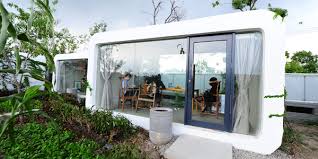
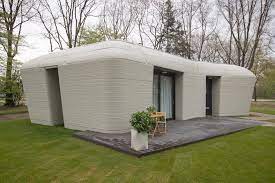
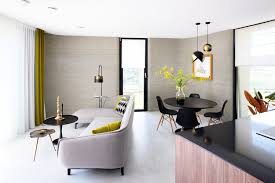
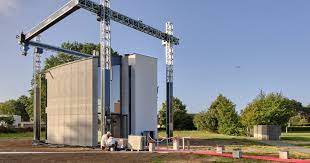
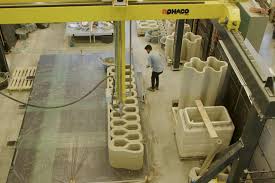







Comments